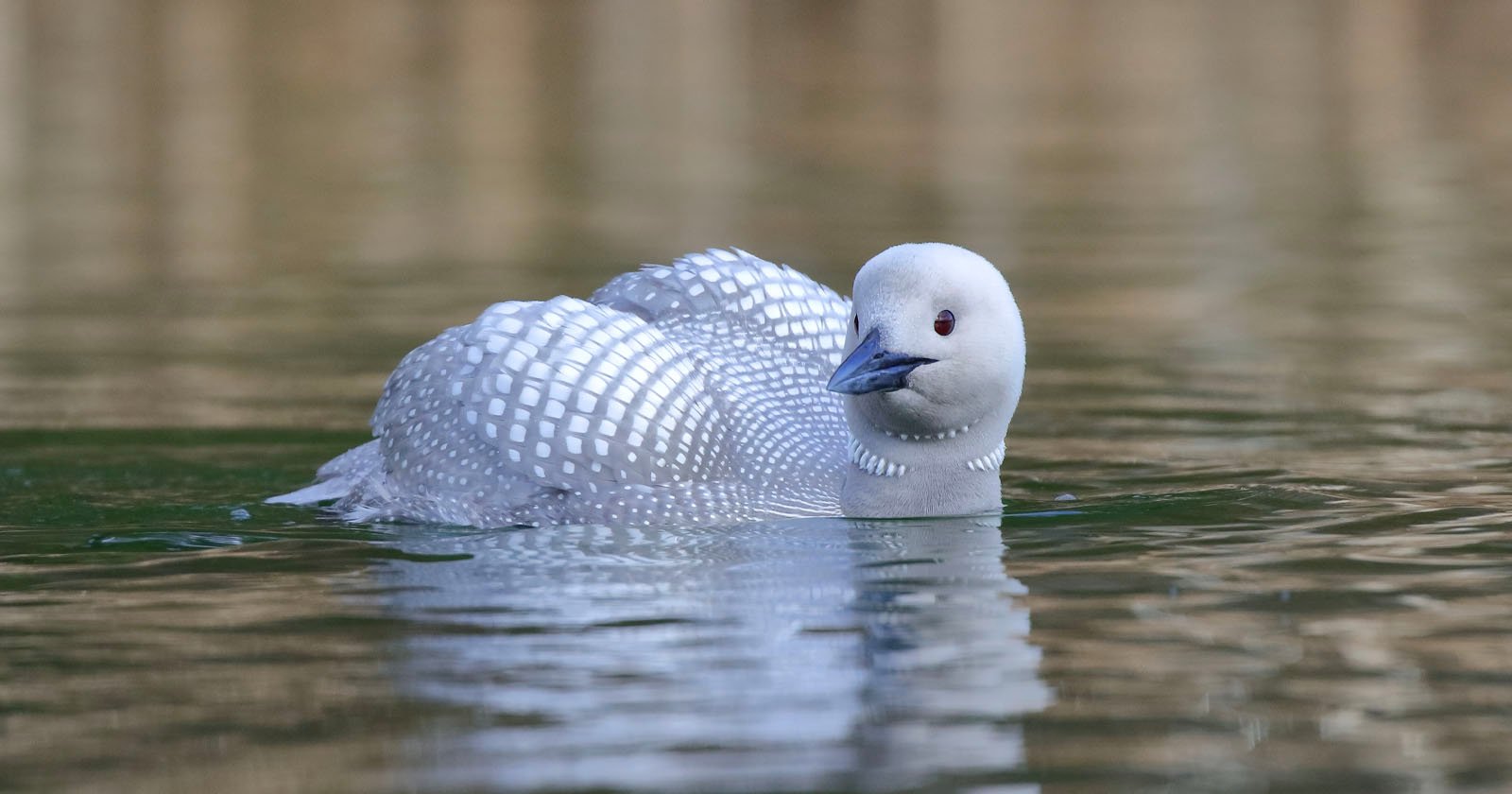
Canadian photographer Chris Whitty captured a rare white loon after spending years searching for it. The white loon is leucistic, similar to an animal with albinism, but less extreme. Albinism prevents an animal from producing melanin while leucism is a “partial loss of all types of pigmentation,” making it appear white or lighter in color or splotchy in parts, as the National Park Service explains. Only one in 30,000 birds is leucistic, Dale Gentry, the director of conservation for Audubon Upper Mississippi River, tells CBS News.
“It’s much more common for birds to have little patches of white feathers,” Gentry told the publication. “But for the entire bird to be in sort of leucistic plumage is less common.” Whitty, who lives in interior British Columbia in western Canada, first spotted a white loon several years back. After unsuccessful annual searches in the years since, he lucky enough to come across a leucistic loon again. Fortunately, Whitty, a talented amateur photographer, was also able to capture photo evidence. Whitty used a Canon 5D Mark IV with an EF 100-400L II telephoto zoom lens a 1.4x teleconverter.
He hasn’t seen the bird since, but Whitty’s photographs show the striking difference of the white loon against its dark-feathered friends. In the water, the loon captivates. And thanks to his telephoto lens, Whitty’s photos show the bird in spectacular detail. Whitty told CBS News that he was out taking pictures of the beautiful leucistic loon for at least an hour. “What I like to do is I paddle slowly and quietly and get in the angle for the light and then just stop and then just watch, and they just tolerated me for quite a while,” the photographer says.
“I went out to the same lake, at the same time, for nine more days straight… and nothing. And haven’t seen it since,” Whitty told Fox News in an email. “I am not a bird expert by any means, but my guess on the pattern is that I have seen this bird as it makes its way to somewhere it actually lives/nests, and my run-ins were stopovers along the journey.” To help protect the bird and its habitat, Whitty is keeping its location under wraps, although he jokes that even if people knew where it was, they probably wouldn’t be able to find it. As wildlife photographers know all too well, when you’re determined to photograph something very specific, it feels like you’ll never see it. Image credits: Photographs by Chris Whitty






